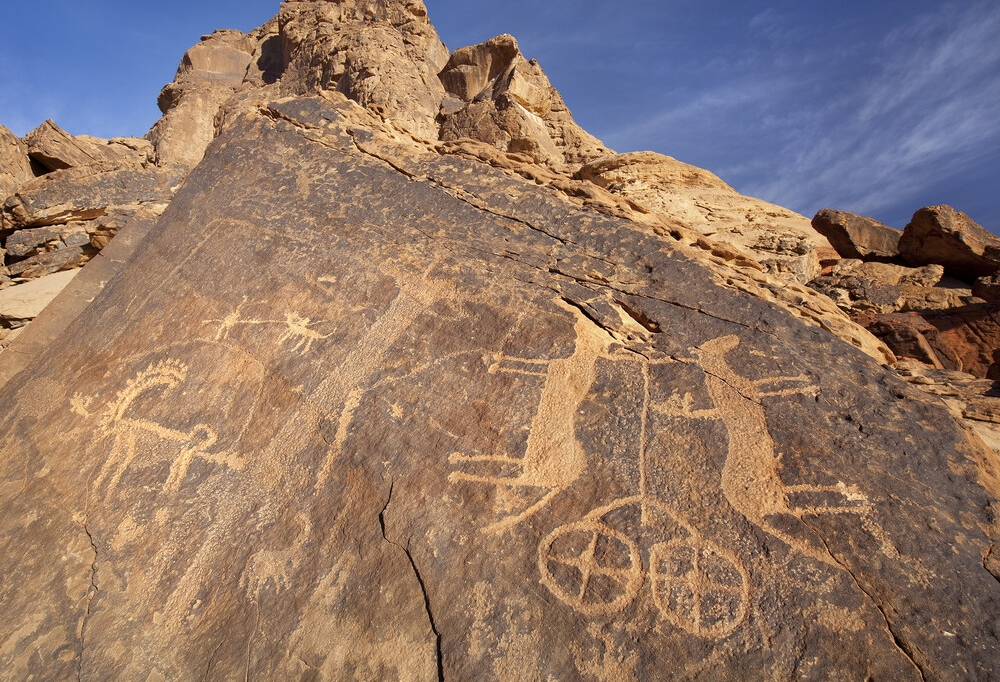



Rock Art in the Hail Region of Saudi Arabia - rich array of ancient art protected by UNESCO

Baku, January 11, AZERTAC
The archaeological Rock Art site, located in Jubbah, Ha’il province, is of Saudi Arabia’s five listed UNESCO World Heritage sites.
The property is comprised of two components: Jabal Umm Sinman at Jubbah, located approximately 90 km northwest of the city of Hail, and Jabal Al-Manjor and Jabal Raat at Shuwaymis, approximately 250 km south of Hail.
At Jabal Umm Sinman Jubbah, the ancestors of present-day Arabs left marks of their presence in numerous petroglyph panels and inscriptions within a landscape that once overlooked a freshwater lake; and at Jabal Al-Manjor and Jabal Raat, Shuwaymis, the large number of petroglyphs and inscriptions has been attributed to almost 10,000 years of human history within a valley with flowing water.
Together, these components contain the biggest and richest rock art complexes in the Kingdom of Saudi Arabia and the wider region. Processes of desertification from the mid-Holocene altered the local environmental context and patterns of human settlement in these areas, and these changes are expressed in the numerous petroglyph panels and rich inscriptions.
The rock art of Jabal Umm Sinman Jubbah and Jabal Al-Major and Jabal Raat near Shuwaymis contain an exceptionally large number of petroglyphs, created by using a range of techniques with simple stone hammers, against a background of gradual environmental deterioration, and are visually stunning expressions of the human creative genius.
The rock art at Jabal Umm Sinman at Jubbah and Jabal Al-Major and Jabal Raat at Shuwaymis provide an exceptional testimony to the challenges of past societies in response to environmental catastrophes. In addition, the petroglyphs at Shuwaymis provide an exceptional testimony of a society that vanished, leaving behind an exceptionally detailed record of its existence.
The World Heritage Committee of UNESCO inscribed rock art in the Hail region on the World Heritage List in 2015.
Azerbaijan's Minister of Culture holds meeting with his UAE counterpart in Venice
Azerbaijani pavilion launched at 60th Venice Biennale VIDEO
Azerbaijan`s pavilion to showcase at 60th Venice Biennale